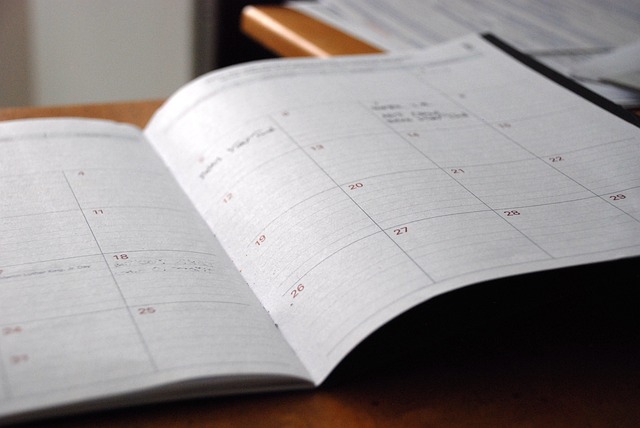Tips and Strategies for Helping Children with Autism Develop New Routines
With difficulty making sense of their surroundings and feelings of anxiety, children with autism often develop routines and rituals to have some form of order and structure to their lives. Everyday routines such as washing and teeth brushing are generally consistent. There are times, however, when routines change during events such as fire drills, field trips, and special occasions. During times of transition or change, children may be more likely to have tantrums, aggressive behavior, and show resistance. It is important to prepare children for the possibility of change and help them understand the procedures they need to follow during novel situations.
Below are some tips and strategies you can use with your child to form new routines or prepare for changes in existing routines.
1. Priming: Priming is a way to help children preview situations they may struggle with before they occur and helps events become more predictable. There are various approaches that utilize priming to prepare children for new or different routines.
- Social Stories: Social stories help explain social concepts and situations to children with autism. They are usually written in first person from the perspective of a person with ASD and are at the student’s comprehension level. To prepare children for new routines, the social story can incorporate an unexpected change or new event that corresponds with changes the child is likely to encounter. In such a way, children can preview the event along with positive strategies they can use when met with these changes.
 Video Priming: Video priming is also an approach that has been used to prepare children for upcoming events. Since viewing is often a preferred activity for children with ASD, the approach can be an effective strategy for priming children. After identifying aspects of the event that may cause anxiety, you can go to the location with a video recording device. In the video, you can go through the steps required to perform the activity, including narration about the process and requirements. By viewing the video with children several times during the days prior to the activity, you can help them anticipate and prepare for the new routine.
Video Priming: Video priming is also an approach that has been used to prepare children for upcoming events. Since viewing is often a preferred activity for children with ASD, the approach can be an effective strategy for priming children. After identifying aspects of the event that may cause anxiety, you can go to the location with a video recording device. In the video, you can go through the steps required to perform the activity, including narration about the process and requirements. By viewing the video with children several times during the days prior to the activity, you can help them anticipate and prepare for the new routine.
- Visiting New Places: By visiting a new place prior to the change, children can become more familiar with the environment. Try to arrange the visit during a quieter time of day, with less noise and people so that the initial experience is not too overwhelming. If visiting is not possible, you can also look for images of the place on the Internet and show them to the child prior to the event.
- Small Changes: Making small changes over a period of time can help children prepare for new routines. For example, to adjust to the schedule of a new school year, you can slowly change morning and bedtime routines to match the school schedule weeks before the first day of school. You can incrementally make wakeup and bedtime earlier by 30 minutes each week. Additional changes can be added once the child has made small successful adjustments.
 2. Schedules: By using schedules with pictures to visually communicate upcoming events, children can make easier transitions and develop greater independence. It is important to use real pictures and not cartoons (For more on this see: Why Real Photos? What About Cartoons) By having an icon that signifies change, such as a surprised face, children can know to expect changes to their routine and may feel less anxious. Showing and reminding children that there will be changes several days in advance can help them prepare before the shift occurs. Scheduling some extra time in between changes and transitions can also help your child prepare and cope with stress during the new routine.
2. Schedules: By using schedules with pictures to visually communicate upcoming events, children can make easier transitions and develop greater independence. It is important to use real pictures and not cartoons (For more on this see: Why Real Photos? What About Cartoons) By having an icon that signifies change, such as a surprised face, children can know to expect changes to their routine and may feel less anxious. Showing and reminding children that there will be changes several days in advance can help them prepare before the shift occurs. Scheduling some extra time in between changes and transitions can also help your child prepare and cope with stress during the new routine.
3. Make Backup Plans: Sometimes planned activities can fall through and cause unpleasant reactions such as disappointment and anger. It is important to have back-up plans and second-choice activities that you can talk through with your child in the event of necessary changes.
4. Praise, Reward, and Reinforce: It is a real achievement when your child is able to follow through with a new routine or deal with unexpected changes. It is easier to cope with fear and anxiety when we know that we will receive social approval for overcoming our emotions. If verbal approval is not enough, you can give your child a small tangible reward to show that you are proud.

Grace Chen
Grace Chen is currently pursuing an Ed.M. in Arts in Education at Harvard Graduate School of Education. She has been a teaching artist, curriculum developer, and research assistant focusing on innovative evaluations in out-of-school time programs. She hopes to develop resonant and empowering art programs by partnering with youth in educational research and practice.




